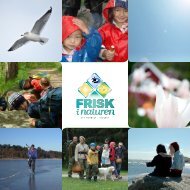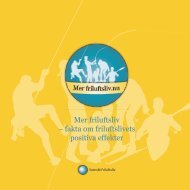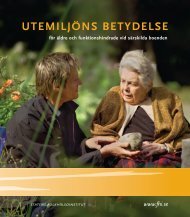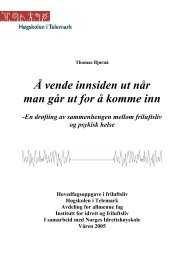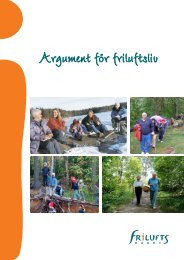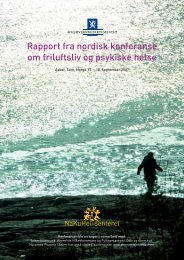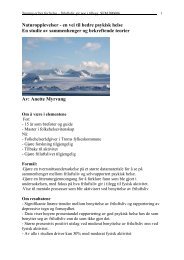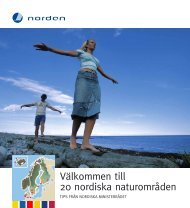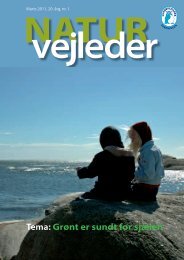Green Care: A Conceptual Framework - Frisk i naturen
Green Care: A Conceptual Framework - Frisk i naturen
Green Care: A Conceptual Framework - Frisk i naturen
You also want an ePaper? Increase the reach of your titles
YUMPU automatically turns print PDFs into web optimized ePapers that Google loves.
Christiansen et al (2005) and Kielhofner’s model of human occupation<br />
(MOHO) (Kielhofner, 2002). The relationships between people,<br />
environments, and occupations are dynamic and complex. Each person<br />
has her or his personal characteristics; environments are unique, and the<br />
meanings and value of occupations vary (Christiansen et al, 2005).The<br />
PEOP model can be used to describe the interaction of these elements<br />
within green care interventions.<br />
PEOP is a client-centred model aimed at improving the everyday<br />
performance of necessary and valued occupations and meaningful<br />
participation. The model identifies factors relevant to occupational<br />
performance and participation and can therefore be used to target areas for<br />
therapeutic intervention. The model consists of four elements: what people<br />
want or need to do in their daily living (occupation), the act of doing the<br />
occupation (performance), and the personal (person) and environmental<br />
(environment) factors which support, enable, or restrict the performance<br />
of the activities, tasks, and roles. All of these elements put together lead to<br />
occupational performance and participation (Figure 5.1).<br />
Figure 5.1: The Person-Environment-Occupation-Performance model (PEOP)<br />
PERSON<br />
(Intrinsic Factors)<br />
• Spiritual<br />
• Physiological<br />
• Cognitive<br />
• Neurobehavioral<br />
(Christiansen et al, 2005)<br />
• Psychological<br />
54 <strong>Green</strong> <strong>Care</strong>: A <strong>Conceptual</strong> <strong>Framework</strong><br />
OCCUPATION<br />
OCCUPATIONAL<br />
PERFORMANCE<br />
AND<br />
PARTICIPATION<br />
PERFORMANCE<br />
• Social Support<br />
• Social and<br />
Economic Systems<br />
ENVIRONMENT<br />
(Extrinsic Factors)<br />
• Culture and Values<br />
• Built Environment<br />
and Technology<br />
• Natural Environment<br />
Well-Being Quality of Life<br />
The model is based on a belief that people will demonstrate mastery<br />
(human agency) within their world. To meet their personal needs,<br />
individuals must be competent enough to effectively use the available<br />
resources within their living environment. Another postulate of the



